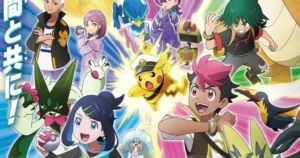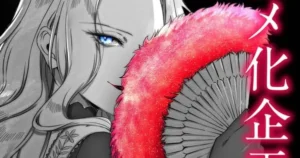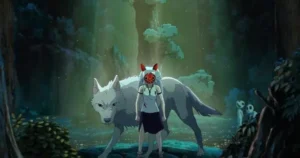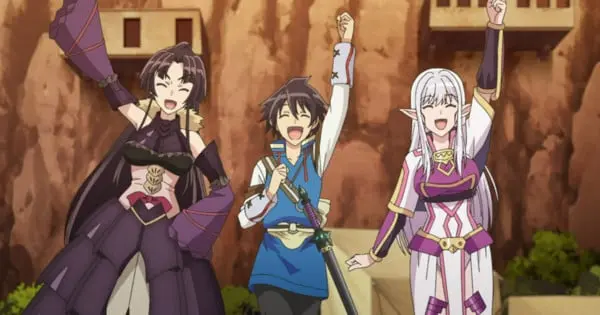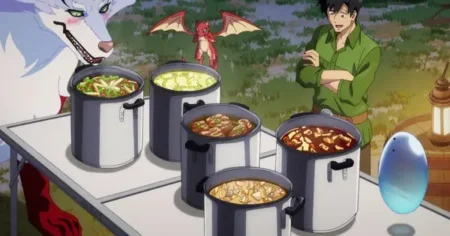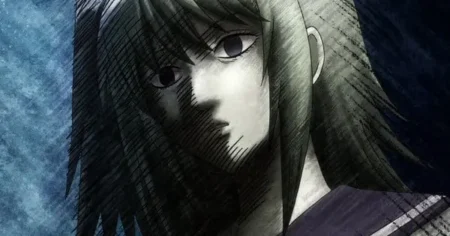Episodes 9 and 10 of “Welcome to Japan, Ms. Elf!” further develop the series’ blend of fantasy adventure and slice-of-life comedy, offering both exciting developments in the labyrinth and heartwarming moments in Japan. While the animation may not always be suited for intense action, the show continues to shine through its endearing characters and exploration of cultural differences, solidifying its position as a cozy and enjoyable watch for fans of the reverse isekai genre. The focus shifts between the dream world and Japan, offering a unique take on the isekai trope.
Wridra Joins the Party: A Dragon’s Devotion and a Tank’s Debut
Episode 9 marks a significant turning point as Wridra the Arkdragon officially joins Kazuhiro and Marie’s party as their dedicated tank. Her inclusion injects a new dynamic into the group, with her acting as Marie’s doting older-sister figure and Kazuhiro’s matchmaker. Wridra’s desire to join the adventure stems from a fear of being left out and a genuine interest in experiencing new things with her friends. This contrasts with her powerful dragon persona, creating a humorous and endearing character. Wridra figured it was a “no-brainer” to add her to the party.
Sven’s Ambush: Action Falls Flat, Humor Prevails
The episode also introduces Sven and his lackey, who ambush the party in an attempt to seize the labyrinth for themselves. However, the ensuing battle sequence highlights the anime’s weakness in action animation. The animation is described as stiff, the storyboards plain, and the choreography lacking. Kazuhiro’s illusory sword-fighting technique, which should be visually impressive, is instead underwhelming. Despite the lackluster action, the episode is saved by its humor and character interactions. Wridra’s mismatched fight against Sven’s assistant provides comedic relief, while Marie’s frustration with Kazuhiro’s fighting style adds to the lighthearted tone.
Labyrinth Exploration and Japanese Curry: A Blend of Two Worlds
Episode 10 sees the team finally venturing into the labyrinth after obtaining approval from the Sorcerer’s Guild. However, the episode also focuses on Kazuhiro and Marie’s life in Japan, creating a balanced narrative that explores both worlds.
New Encounters: Expanding the Circle of Friends
At a marketplace near the labyrinth, Kazuhiro and Marie encounter Zera, a prestigious adventurer from the House of Thousand, and Doula, the captain of the Andalusite Team. Zera, grateful for their discovery of the labyrinth, assists them in obtaining a tent and provides them with furniture. Doula gifts Kazuhiro a local tea as a token of appreciation. These encounters expand Kazuhiro and Marie’s social circle and hint at potential future collaborations.
Homesickness and Curry: A Taste of Japan in Another World
The episode explores the concept of homesickness as Kazuhiro and Marie miss Japan while in the fantasy world. To alleviate this, Kazuhiro brings the tea Doula gifted him back to Japan and later invites Wridra to try Marie’s Japanese curry. The curry scene highlights the anime’s strength in portraying the characters’ enjoyment of simple pleasures and their growing bond. The episode also confirms that Kazuhiro can transport items from the fantasy world to Japan, adding another layer to the reverse isekai aspect.
Looming Threat: The Age of Demons
While exploring the labyrinth, Team Amethyst discovers a mural depicting a legend about the Age of Demons. This could be foreshadowing a larger conflict, but it is unlikely that the show will delve into it deeply in the remaining episodes.
A Mixed Reception: Strengths and Weaknesses
Reviews for Episodes 9 and 10 of “Welcome to Japan, Ms. Elf!” are mixed, with some praising the character interactions and slice-of-life elements, while others criticize the animation quality and lack of significant plot development.
Praises
- Character Chemistry: The relationship between Kazuhiro and Marie continues to be a highlight, with their growing affection for each other being both sweet and endearing. Wridra’s addition to the party further enhances the group dynamic, providing comedic relief and support.
- Slice-of-Life Elements: The anime excels at portraying the characters’ enjoyment of everyday activities, such as cooking, shopping, and exploring Japan. These moments provide a sense of warmth and comfort, making the show a relaxing watch.
- Reverse Isekai Concept: The anime’s unique blend of isekai and reverse isekai elements continues to be a draw, with the exploration of cultural differences and the juxtaposition of fantasy and reality providing a fresh perspective on the genre.
Criticisms
- Animation Quality: The animation quality remains a consistent criticism, particularly during action sequences. The stiff movements and lack of dynamic choreography detract from the excitement of the battles.
- Lack of Plot Development: Some viewers feel that the plot progresses too slowly, with the anime focusing more on slice-of-life moments than on advancing the main storyline. The introduction of new characters in Episode 10 is seen as a potential distraction from the main plot.
- Fan Service: While some appreciate the fan service elements, others find them to be excessive and unnecessary.
Final Thoughts: A Cozy Anime with Endearing Characters
Despite its flaws, “Welcome to Japan, Ms. Elf!” remains a cozy and enjoyable anime with endearing characters and a unique premise. The series’ strengths lie in its slice-of-life elements, character interactions, and exploration of cultural differences. While the animation quality and lack of significant plot development may disappoint some viewers, the show’s overall warmth and charm make it a worthwhile watch for fans of the reverse isekai genre.

